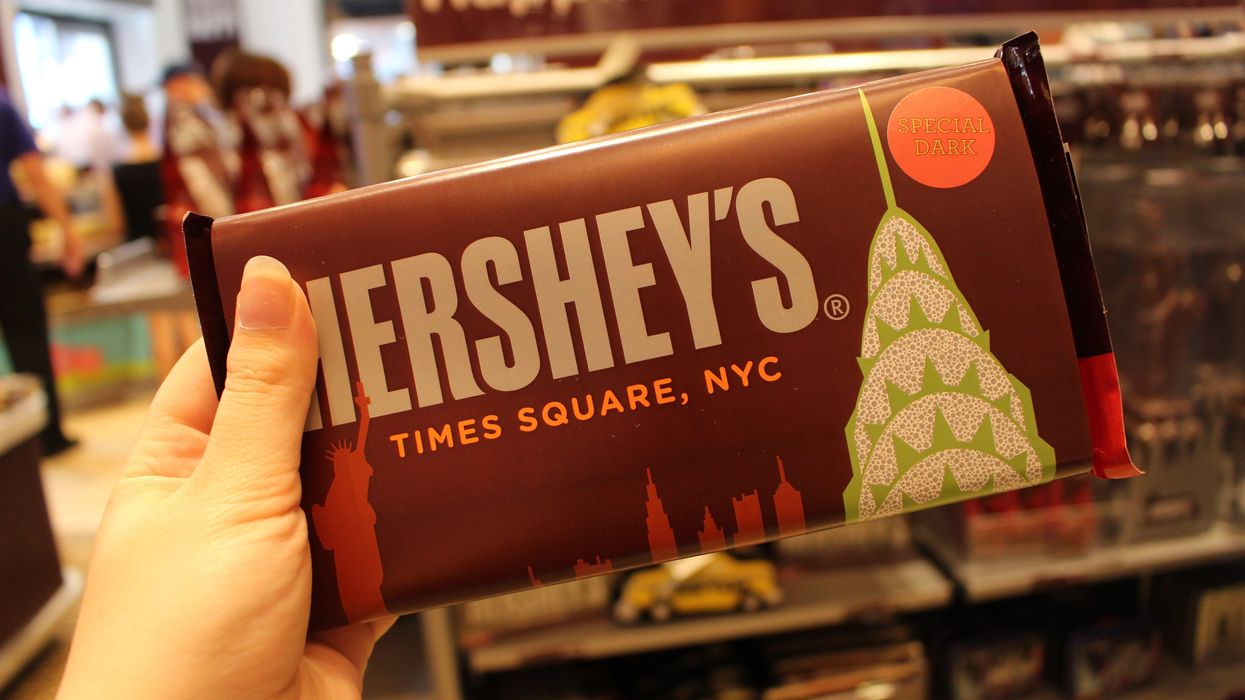Economy
02 February 2023
Hershey: Inflation isn't cutting out chocolate
The CPG is boosting advertising spend in 2023.

Photo by Janne Simoes on Unsplash
The CPG is boosting advertising spend in 2023.

During tough times, people turn to sweet and salty snacks.
That idea was reiterated by Hershey on Thursday, as the CPG reported earnings that were headlined by a 16% increase in net sales for the year, and an 18.%% increase in adjusted earnings per share.
While Hershey benefitted from stay-at-home trends during the pandemic, CEO Michele Buck said people continued to turn to the company’s candy as the economic picture grew cloudier in 2022. That’s because chocolate and salty snacks are two of the top three resilient treats that consumers aren’t willing to skip, Buck said. It confirms recent findings by Mondelez that people are continuing to make room in their budget for snacks even as prices go up.
“Chocolate moments are such a heavily integrated part of consumers’ weekly routines, from rewarding moments to stress relief to self-care, and everything in between, that they indicate they would rather cut back on other expenses to make room for chocolate because they love it so much and it’s affordable,” Buck told analysts. “Salty snacks are another regular companion that consumers are hard-pressed to cut back out of their grocery budget. Not only are they affordable compared to other expenses, but they are key parts of both parents’ and kids’ daily routines.”
One reason for resilience is that chocolate and other sweets tend to be sought out in good times and bad. Buck acknowledged that this was essentially two opposing parts of the consumer brain.
“One is when they are incredibly happy and it's a treat time, and they want to treat themselves and the other is when there are downtimes, and they want a bright spot,” she said. “But they do view these categories and especially chocolate as a part of emotional wellness – what it does and how it makes them feel. “
With demand remaining in place and new capacity constraints coming online that will allow it to make more products to ensure it keeps up, Hershey is aiming to double down despite the economy. It expects to increase advertising levels in the double-digits this year, with a particular focus on Reese’s and Hershey’s, as well as gummies and better-for-you. It also looking to add fuel to salty snacks brands, as Skinny Pop, Pirate’s Booty and Dot’s have nearly doubled in recent years.
“People are connected to our brands. And during the tough times, we know that that connectivity leads to them continuing to buy,” Buck said. “So yes, it is important during an inflationary time.”
Campbell Soup Company CEO Mark Clouse offered thoughts on messaging amid inflationary shifts in consumer behavior.
After months of elevated inflation and interest rate hikes that have the potential to cool demand, consumers are showing more signs of shifting behavior.
It’s showing up in retail sales data, but there’s also evidence in the observations of the brands responsible for grocery store staples.
The latest example came this week from Campbell Soup Company. CEO Mark Clouse told analysts that the consumer continues to be “resilient” despite continued price increases on food, but found that “consumers are beginning to feel that pressure” as time goes on.
This shows up in the categories they are buying. Overall, Clouse said Campbell sees a shift toward shelf-stable items, and away from more expensive prepared foods.
There is also change in when they make purchases. People are buying more at the beginning of the month. That’s because they are stretching paychecks as long as possible.
These shifts change how the company is communicating with consumers.
Clouse said the changes in behavior are an opportunity to “focus on value within our messaging without necessarily having to chase pricing all the way down.”
“No question that it's important that we protect affordability and that we make that relevant in the categories that we're in," Clouse said. "But I also think there's a lot of ways to frame value in different ways, right?”
A meal cooked with condensed soup may be cheaper than picking up a frozen item or ordering out. Consumers just need a reminder. Even within Campbell’s own portfolio, the company can elevate brands that have more value now, even if they may not always get the limelight.
The open question is whether the shift in behavior will begin to show up in the results of the companies that have raised prices. Campbell’s overall net sales grew 5% for the quarter ended April 30, while gross profit margins held steady around 30%. But the category-level results were more uneven. U.S. soup sales declined 11%, though the company said that was owed to comparisons with the quarter when supply chains reopened a year ago and expressed confidence that the category is seeing a longer-term resurgence as more people cook at home following the pandemic. Snacks, which includes Goldfish and Pepperidge Farm, were up 12% And while net sales increased overall, the amount of products people are buying is declining. Volumes were down 7%.
These are trends happening across the grocery store. Campbell is continuing to compete. It is leading with iconic brands, and a host of different ways to consume them. It is following that up with innovation that makes the products stand out. Then, it is driving home messaging that shows consumers how to fit the products into their lives, and even their tightening spending plans.
Campbell Soup is more than 150 years old, and has seen plenty of difficult economic environments. It is also a different business today, and will continue to evolve. At the end of the day, continued execution is what’s required.
“If it's good food, people are going to buy it, especially if it's a great value,” Clouse said.